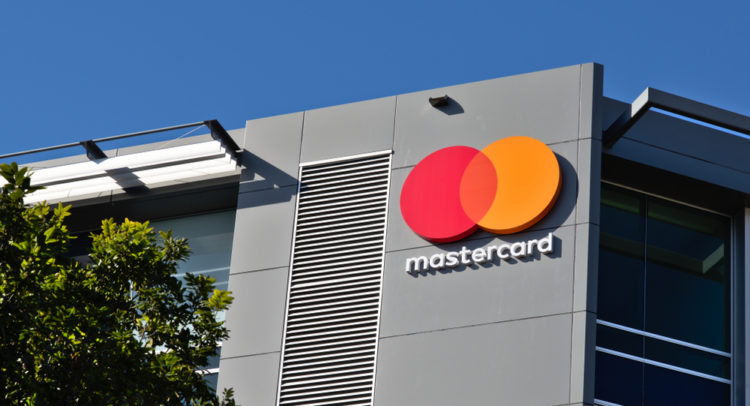One common characteristic of a publicly traded company with a superb business model is consistently exceeding analysts’ expectations. Put another way, great businesses usually post phenomenal quarterly results for shareholders. Mastercard (MA) is a real-life example of this in action. After sharing its third-quarter results on October 31st, the company delivered 16 consecutive quarters of net revenue and adjusted diluted EPS beats. I believe Mastercard’s growth opportunities and valuation position the stock as an interesting compounder to buy right now. Now, let’s examine the reasons behind my bullish position.
Claim 50% Off TipRanks Premium and Invest with Confidence
- Unlock hedge-fund level data and powerful investing tools designed to help you make smarter, sharper decisions
- Stay ahead of the market with the latest news and analysis so your portfolio is always positioned for maximum potential
Mastercard Didn’t Disappoint in Q3
Mastercard’s toll-booth-like business model was again vindicated in the third quarter. The company’s net revenue climbed 12.8% year-to-date to $7.4 billion, $100 million ahead of the analysts’ consensus. Thanks to global economic development and improved card adoption, Mastercard’s total cards on its network increased by 6.2% to almost 3.4 billion for the quarter. Alongside stable consumer purchasing habits, this led to double-digit growth rates in its gross dollar volume, cross-border volume, and switched transactions in the quarter.
Mastercard’s adjusted diluted EPS increased by 14.7% year-over-year to $3.89. For context, that was $0.15, better than the analysts’ consensus for the quarter. Disciplined cost control and share repurchases helped adjust diluted EPS growth to outpace net revenue growth in the quarter.
Catalysts Abound to Fuel Future Growth
Moving forward, Mastercard arguably has a clear path to keep delivering teens adjusted diluted EPS growth annually. Like Visa (V), the company’s business model benefits from inflation. This is because Mastercard generates net revenue by taking a percentage of gross dollar volumes completed on its payment network. As the cost of goods and services steadily rises, this organically boosts dollar volumes on top of a growing cardholder base.
Speaking of Mastercard’s bigger cardholder base, the company continues to admirably leverage its status as the world’s second-biggest publicly traded payment processor. In the third quarter, Brussels Airlines announced that it’s migrating its co-brand card and loyalty program to Mastercard. CEO Michael Miebach also noted that Mastercard is building its partnership with one of Qatar’s leading commercial banks, Doha Bank.
Not surprisingly, these elements support analysts’ positive future growth forecasts. Beyond the 18.2% rise in adjusted diluted EPS to $14.49 predicted for this year, double-digit growth is set to continue for the foreseeable future. The consensus is that adjusted diluted EPS will compound by another 12.4% in 2025 to $16.28. For 2026, an additional 16.9% jump in adjusted diluted EPS to $19.04 is anticipated.
A Small Dividend with High Growth Potential
On paper, Mastercard’s 0.5% dividend yield is minuscule compared to the S&P 500 index’s (SPX) 1.3% dividend yield. In examining world-class dividend growth stocks, there is always more than meets the eye, though. Since Q4 2019, the company’s quarterly dividend per share has soared by 100% to the current rate of $0.66.
Mastercard’s payout ratio is very low, too. The payout ratio for 2024 is set to be in the high teens. This leads me to believe that the dividend can double again in the next five years. That begins with what I believe will be a 13.6% lift in the quarterly dividend per share to $0.75, announced next month.
Mastercard Is Financially Vibrant
Mastercard is also a low-risk company on the balance sheet front. The company’s net debt balance as of September 30th was just $7 billion. Relative to the $16.1 billion in annualized EBITDA through the first nine months of 2024, this is a net debt-to-leverage ratio of just 0.4. Mastercard’s interest coverage ratio in the year’s first three quarters was strong, clocking in at just above 50. That’s why the payment processor enjoys an A+ credit rating from S&P Global (SPGI) on a stable outlook.
The Valuation Looks Sensible
Mastercard doesn’t quite look fully priced for its fundamentals, either. The company’s forward P/E ratio of 31 is slightly less than its 10-year average P/E ratio of 33.2. Additionally, the company’s mid-teens annual adjusted diluted EPS growth outlook jives with its historical growth. Mastercard’s non-GAAP net profit margins continue expanding and reaching the high 40% range. Thus, I believe there is still a case to be made that the 10-year average P/E ratio continues to represent fair value for Mastercard’s shares.
Is Mastercard a Buy, According to Analysts?
Turning to Wall Street, analysts have a Strong Buy rating consensus on Mastercard. Of 16 analysts, 13 were assigned a Buy rating, and three were assigned a Hold rating in the last three months. At $504.92, the average 12-month price target of $544.36 implies 7.81% capital appreciation.

Takeaway
Mastercard is undeniably a business firing on all cylinders. The company keeps growing briskly and has the tailwinds to sustain this growth. The balance sheet is A-rated, and the dividend is very safe. Mastercard’s valuation puts the stock over the top, which is why I’m initiating coverage with a buy rating.
















